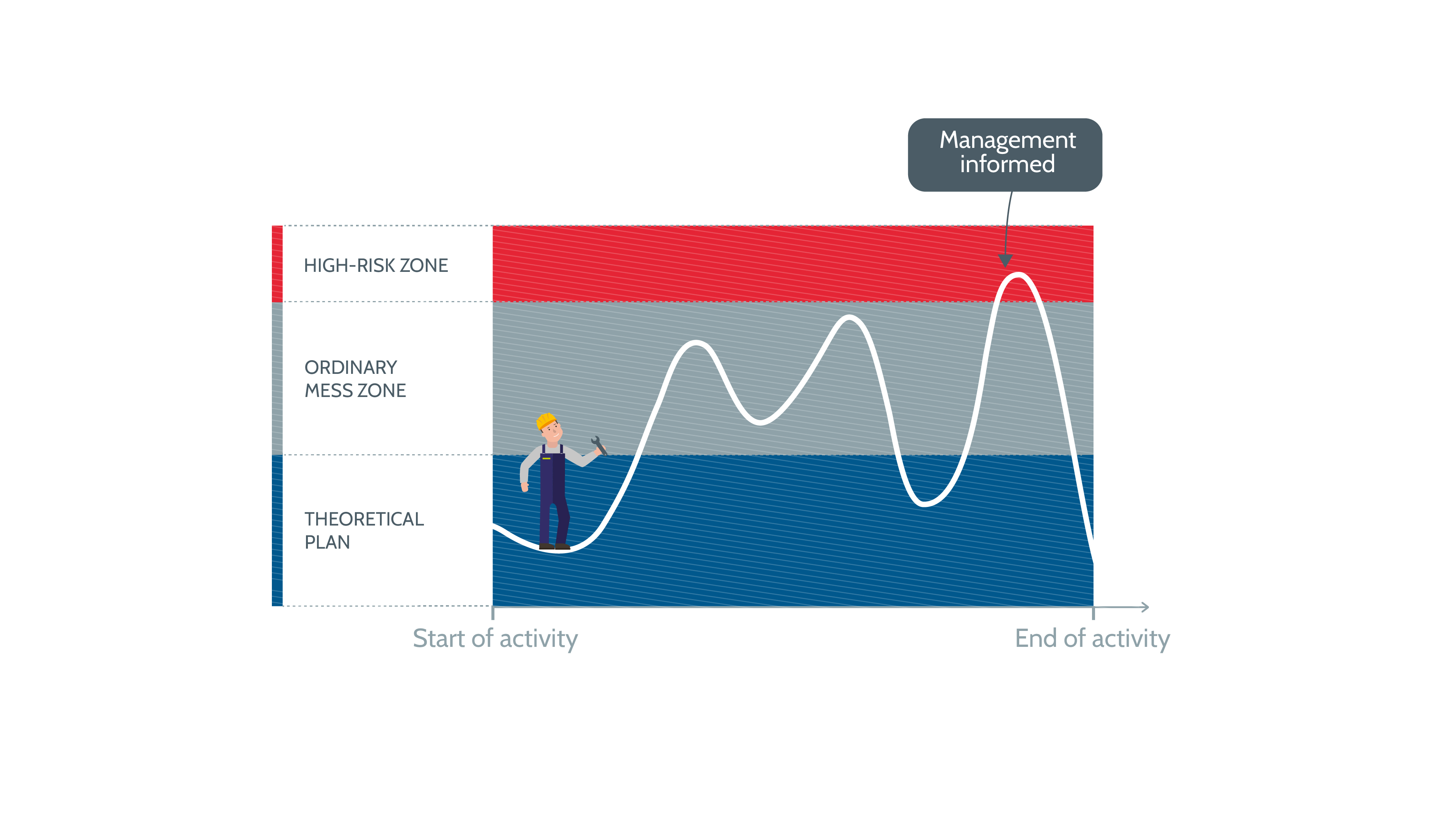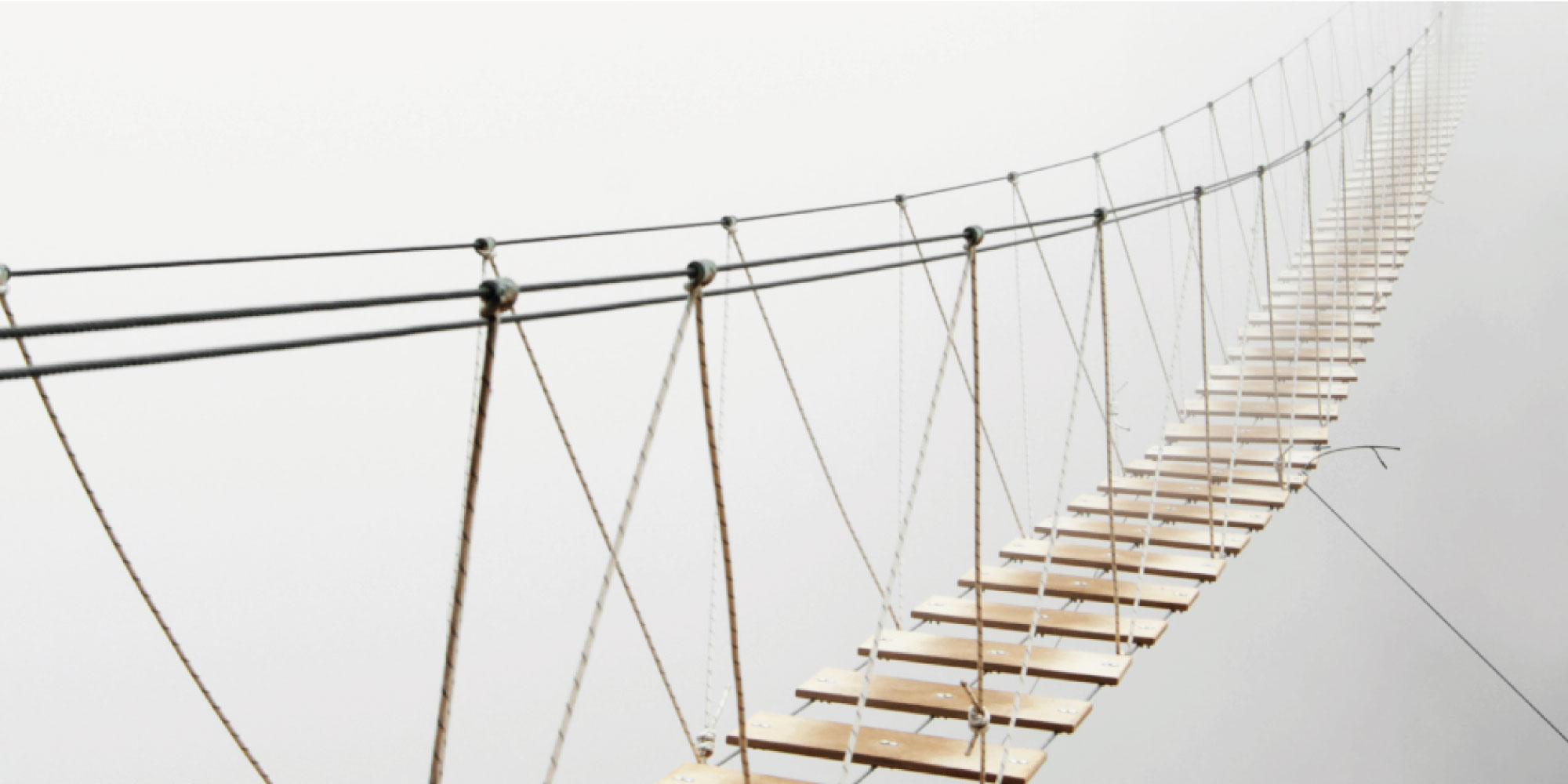Spending time in the field
 Spending time in the field
Spending time in the field
Spending time in the field means talking to your teams, observing and discussing things with them, either during organized safety visits or informal chats. This fourth leadership principle is key to not only understanding how feasible it is to implement safety measures in practice, but also to demonstrate your interest and commitment.
Why is it important for managers to spend time in the field?
1. Spend time in the field helps to understand how feasible it is to implement safety measures in practice
Of course, we all know that there are procedures, plans and schedules that tell us what has to be done, and when. But we all also know that in reality, things never work out exactly as planned: an absence, an emergency, an unplanned co-activity, etc. This is the difference between what we call prescribed work and real work.
It is therefore essential to spend time in the field to see for yourself what is happening, and evaluate the level of safety. It is only when you are onsite that you can see the team’s usual practices, listen to what they have to say, understand how difficult it is to apply certain rules, and hear about any initiatives or adaptations that have been implemented.
The zone of ordinary mess
The zone of ordinary mess refers to operations that fall between what the procedure calls for, and what is in the high-risk zone. In other words, real life! The primary goal of an operator is to do what is asked of him or her, while he or she will respect procedures as far as possible, they may have to adapt or take initiatives. Of course, deviations in the high-risk area are the most visible and the hierarchy will be made aware of what is happening. But it is also important for managers to take an interest in this zone of ordinary mess, in the day-to-day problems that increase the human cost of meeting objectives. Because, even if the operation was successful this time, the next time, it might not take much to tip over and cause an incident or even an accident.
2. Spend time in the field to demonstrate your interest and commitment
Another important dimension of spending time in the field is simply to be available, to listen, and to demonstrate your commitment.
It’s not just you who is observing, your teams are also observing you, and evaluating your commitment. So, spend some time, make comments, ask questions, in short, take an interest. This is how you can demonstrate your credibility and set an example.
As we say, “actions speak louder than words"... and actions aren’t easily forgotten.
How, in practice, can I put the time I spend in the field to best use?
It’s important to make it normal
There are many formal practices that requires spending time in the field, the safety visit is only one example. But it is also essential to spend time in the field even when there is no particular reason to do so.
If you want to know what is really happening, your visit should not be an exceptional event that requires time to be allocated in operators’ schedules or that slows down production... but that is necessary for you to keep up-to-date with your indicators at the end of the year. No, we are talking about an ongoing, regular presence.
Of course, this requires you to allocate time in your own schedule, which, in turn, implies that your organization values this activity, and agrees that managers can remove other low-value-added tasks from their often very dense agendas.
A tool for spending time in the field: the preventive safety visit
The preventive safety visit consists of observing a person at work, and talking to him or her about what they are doing, in order to agree together on the safest possible way of doing things. The aim is to identify points for improvement and to transform them into concrete actions: changes in work practices, changes in situational parameters, etc. And then to follow up on these observations and take any necessary actions: consistency is the keyword!
But be aware that the activity may not work out as planned! Your team may see the safety visit as a fault-finding mission, an opportunity for you to tell them what they are doing wrong or collect statistics. It is important to remember that the visit must be conducted in a spirit of goodwill and exchange.
Finally, safety visits are not only for managers and operators. For example, it is in the interest of a director to visit his or her operational and functional managers. And visits to design or engineering teams, subcontracting partners, etc. are also an excellent way to have a better understanding of what is really going on in the company.

The safety visit: some questions to feed the discussion
- Risk awareness and situational awareness: what are the major risks in your line of work? How do you protect yourself from them? What must you do if there is a major accident?
- Environmental and working conditions: do you have problems due to the heat or cold, height, bad weather, confined spaces, etc.? Does your work have an impact on the environment?
- Compliance and respect for rules: are there any golden rules that apply to your work? Why are they essential? Are there any conditions that would make it difficult for you to apply the rules?
- Good practices and safety initiatives: are there any safety practices that you would find interesting to share with colleagues? Would you find it useful to share your experience with other teams?
- Task preparation and execution: how do you prepare in order to be as safe as possible? Is the situation as you had imagined it? Did you encounter any difficulties while making preparations?
- HSE news and priorities: has there been an event or decision concerning safety that has particularly affected you? Where do you get your information from?
- The human factor: how do you feel, in terms of fatigue, morale, etc.? Does the team work well together?
The role of the leader when spending time in the field
Being present, visible and listening is, as you can see, a key ingredient of safety leadership. Here are some actions you can take:
- Allocate non-negotiable slots in your agenda to spending time in the field, both for informal routine visits and official safety visits, and...
- ... Stick to the plan!
- Anticipate difficulties, periods when you should allocate more time to being present in the field
- Be sure to be present both during hazardous activities and routine activities... because a simple bad habit can lead to an incident
- Ask team leaders to accompany you on your visits
- Vary the times and teams you visit, to include as many people as possible, in a variety of workplace situations
- Ensure the implementation of any proposed actions and go back to sites you have already visited in order to close the loop
| Read more about the 7 principles of safety leadership |






